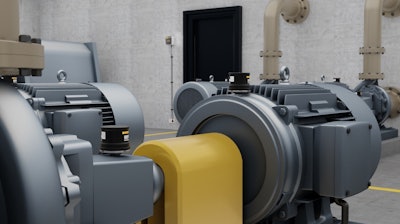
There are multiple factors in a successful digital transformation journey using the Industrial Internet of Things (IIoT), including developing a comprehensive roadmap. Organizations can’t always see the roadblocks, and as a result, opportunities to implement predictive maintenance strategies and improve overall equipment effectiveness (OEE) and reliability stall.
However, partnering with experts at a solution services provider can jumpstart these projects. According to Gartner, businesses that increased funding of digital innovation are 2.5X more likely to be a top performer than a trailing one.
Industries that invested in IIoT-driven technologies and achieved digital transformation early, initially encountered challenging technical and practical barriers. Thankfully, providers started understanding the common hurdles customers faced when implementing new hardware, software and systems. As a result, global, full-scale IIoT system innovators now offer multiple high-value services to support transformations where customers need the most help.
Examples of solution services include:
- Best practices workshops.
- In-depth consultations.
- Expert remote and onsite collaboration.
- Guidance on building an overall roadmap to reliability.
- Ongoing support services to ensure IIoT transformation into the future.
Where an organization exists on the road to reliability usually determines which services they choose to leverage.
Seven Critical IIoT Implementation Services
1. Asset criticality analysis. Organizations identify the business value of a machine or component based on data, not on conjecture or assumptions. Without identifying high-value assets, the organization won’t know which machines would benefit from predictive maintenance strategies.
During an asset criticality analysis, your team works with reliability experts to rank critical assets. With an asset criticality analysis in hand, maintenance leaders can then optimize operations to manage organizational risk. If one has never been performed, reliability experts can help ensure consensus and that the evaluation provides usable accurate results.
2. Connected reliability assessment. Building a reliability roadmap is not an easy affair. The roadmap usually starts with examining the company's current and optimal business states. What short- and long-term goals do they want to achieve with the proposed hardware, software, or system? A solution services provider knows how to meet you were you’re at, whether starting a new program or overhauling an existing one. A reliability assessment examines:
- Available networks.
- Types of assets.
- Mobile capabilities.
- Current personnel training and skill levels.
- Existing devices or tools.
This service resolves barriers where possible, facilitating connected reliability.
3. CMMS critical success factors. One of the chief reasons CMMS implementations fail is because the software is not optimized once implemented. Instead, it becomes a repository, or falls into disuse. A Critical Success Factors Workshop sets users up for deployment success from the start, enabling a faster ROI. When optimized correctly, CMMS software data substantially impacts asset reliability and availability.
4. Kickstart the implementation. Fast-track CMMS implementation with a Kickstart Meeting. During the consultation, provider experts discuss current states and how to quickly accelerate and achieve a client’s desired goals. Having a walkthrough and analysis of a company’s current state means they can hit the ground running as the CMMS implementation is completed. A kickstart should include an analysis of maintenance operations, reporting on:
- Asset hierarchies.
- Preventive maintenance programs.
- Inventory processes.
- Work order or request details.
5. Remote condition monitoring (CM) services. To determine if your organization has the resources and infrastructure to start and maintain a new remote CM program long-term, developing, a primer is a must. Remote condition monitoring services identify potential implementation challenges upfront. The best reliability partners understand that nothing is one-size fits all.
6. Connected thermography assessment. Organizations using thermography often only screen electrical cabinets. They don't realize they can also leverage thermography to increase the reliability of their most critical assets, detect leaks in building envelopes or pipes, and other critical functions. Through these various assessments, experts and stakeholders can assess the resources, processes, and existing technology, and where best to deploy it.
7. Vibration analysis measurement. Vibration is a constant in physics, including physical assets. However, complex vibration issues associated with critical assets often require the support of certified and trained experts. Bringing in experts also eliminates frustrating consequences, like do-overs caused by a lack of technical knowledge.
Filling Organizational Voids
As the transition to IIoT technology accelerates, organizations see evidence of how emerging technologies provide a competitive edge. The IIoT adoption journey must remain fluid, adapting, changing, and growing with business needs. If your company wrestles with implementing IIoT technology, connectivity, or interfacing, consider partnering with a service provider and their experts to overcome obstacles. Many of us are more than eager to assist you in finding workable solutions.
Michael Watson is a product application specialist for Fluke Reliability, focusing on the company’s technician tools, condition monitoring product lines, and CMMS software. For more information, visit www.eMaint.com.






















